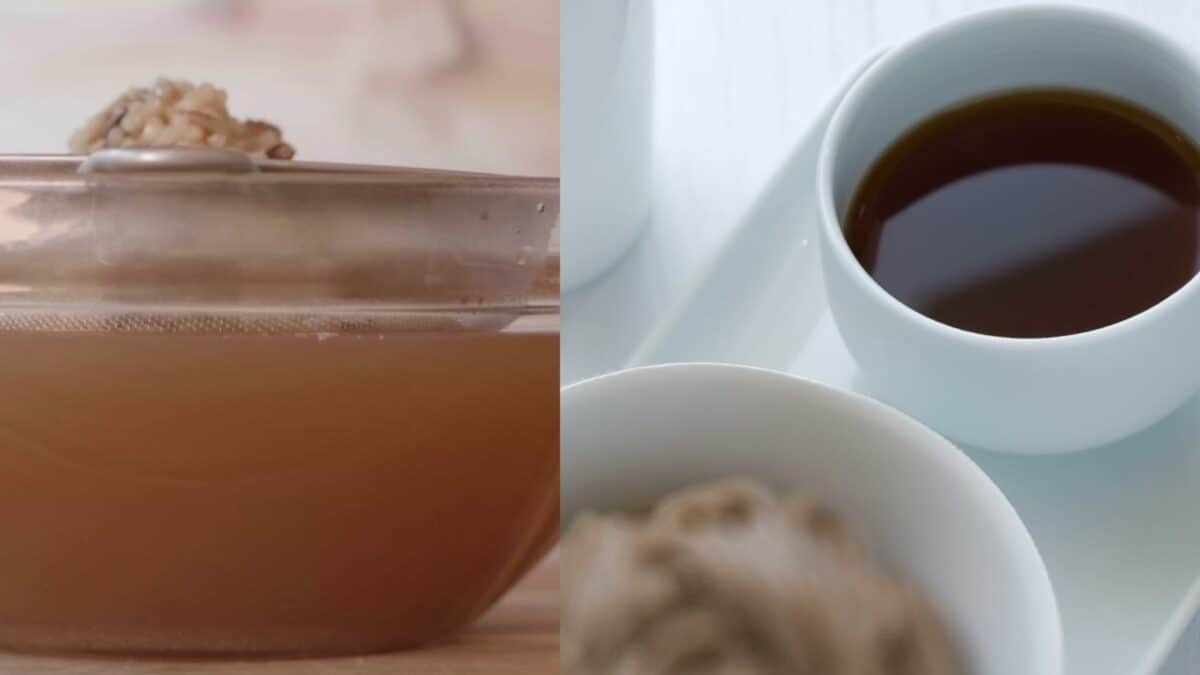Dashi VS Tsuyu VS Mirin VS Miso: How They Differ
Dashi, mirin, miso, and tsuyu are names you’ll often see in Japanese cuisine.
Tsuyu is a dark soup base made from mirin, soy sauce, sake, katsuobushi, and kombu. Dashi is a clear soup base made from katsuobushi and kombu. So Tsuyu is made with dashi and is much sweeter and saltier due to the added mirin and soy sauce.
Miso is made by fermenting soybeans and rice with koji and salt. It becomes a paste that is salty and rich and gives umami to dishes. Dashi is a liquid, not a paste, and isn’t salty but made only for its umami flavor from kombu and katsuobushi.
Let’s look at these a little more in-depth:


Check out our new cookbook
Bitemybun's family recipes with complete meal planner and recipe guide.
Try it out for free with Kindle Unlimited:
Read for freeIn this post we'll cover:
What is dashi?
Dashi is a Japanese soup stock traditionally made by cooking kelp (kombu) and fish (usually bonito flakes) in water. It can also be made with just one of these ingredients, or with a combination of other things like mushrooms, seaweed, and dried shrimp. The final product is a light, fragrant broth that forms the base of many Japanese dishes.
Dashi has a long history in Japan, and its use dates back to the medieval period. It was originally used as a way to add flavor to fish and rice dishes, but it soon became an essential ingredient in many different types of cuisine. These days, dashi is used in everything from noodle soups to simmered dishes, and it’s even sometimes used as a marinade for meats.
Dashi is used to add umami to dishes.
What is tsuyu?
Tsuyu is a type of dashi that is made with soy sauce and mirin also called mentsuyu. It is often used as a dipping sauce or as a soup base. Tsuyu is typically made by combining equal parts soy sauce and mirin, although the ratio can be adjusted to taste. The mixture is then simmered until it thickens slightly.
It can be used in many different ways. It is commonly used as a dipping sauce for tempura or sashimi, and it can also be used to make noodle soup. Tsuyu can also be added to other dishes to add flavor, such as simmered vegetables or grilled meats.
Tsuyu adds saltiness and sweetness to dishes while also instilling it with umami.
What is mirin?
Mirin is a Japanese cooking wine that is similar to rice wine. It is used to add a sweet flavor to dishes and can be found in most Asian supermarkets.
Mirin is made from glutinous rice, koji (a type of fungus), and shochu (a distilled alcoholic beverage). It has a sweet taste and is used to enhance the flavors of savory dishes.
What is miso?
Miso is a traditional Japanese seasoning produced by fermenting soybeans with salt and koji (a type of fungus). It’s used to add savory umami flavor to dishes like soups, stews, and sauces.
Despite its relatively simple ingredients, miso has a complex flavor that can vary depending on the type of soybeans used, the length of fermentation, and the addition of other ingredients like rice, barley, or seaweed.
Miso is a versatile ingredient that can be used in both sweet and savory dishes. It’s especially delicious in soup, but can also be added to marinades, dressings, and sauces for an extra boost of flavor.
If you’re new to miso, start with a milder variety like white or yellow miso. These have a sweeter flavor that’s less intense than darker varieties like red or brown miso.
Once you’ve tried it, experiment with different types of miso to find the one that you like best.
The taste is much stronger than that of dashi.
Both miso paste and dashi are used to make miso soup.
Also read: these are the best mentsuyu brands to buy for a great flavor
Conclusion
While they are not the same, both tsuyu and dashi add umami to Japanese recipes. Tsuyu just happens to add a little more to the mix as well.
Dashi, tsuyu and mirin are often used together in cooking because umami, salt, and sweet just work very well together.
Also read: this is how to make a great mentsuyu
Check out our new cookbook
Bitemybun's family recipes with complete meal planner and recipe guide.
Try it out for free with Kindle Unlimited:
Read for freeJoost Nusselder, the founder of Bite My Bun is a content marketer, dad and loves trying out new food with Japanese food at the heart of his passion, and together with his team he's been creating in-depth blog articles since 2016 to help loyal readers with recipes and cooking tips.

